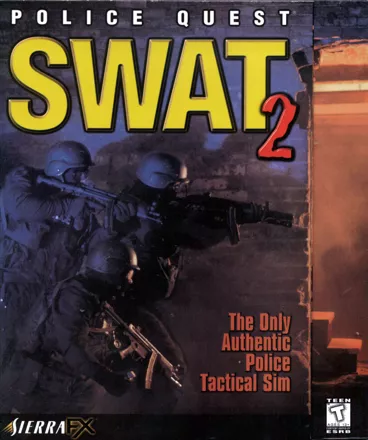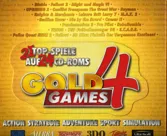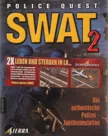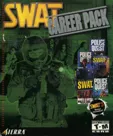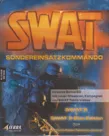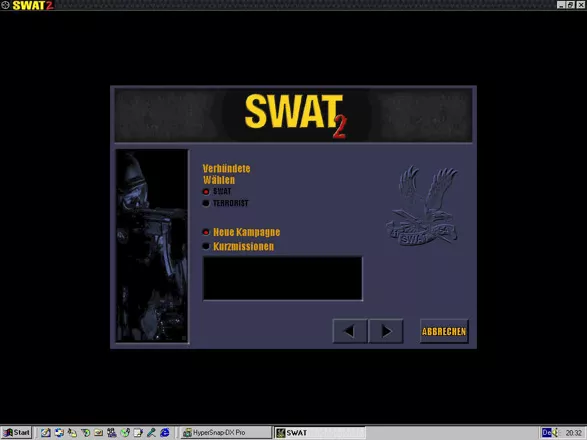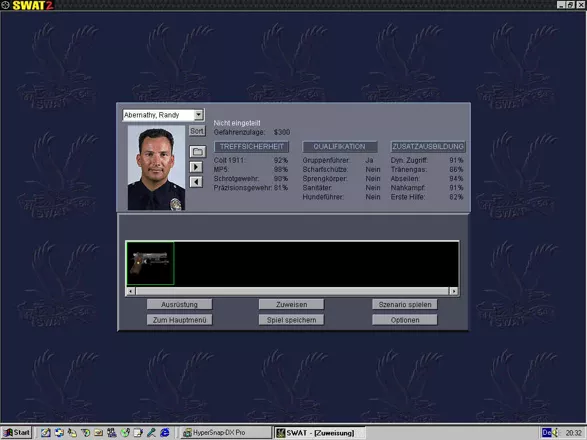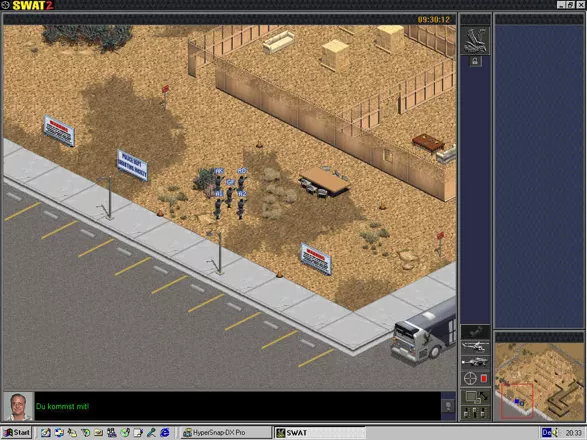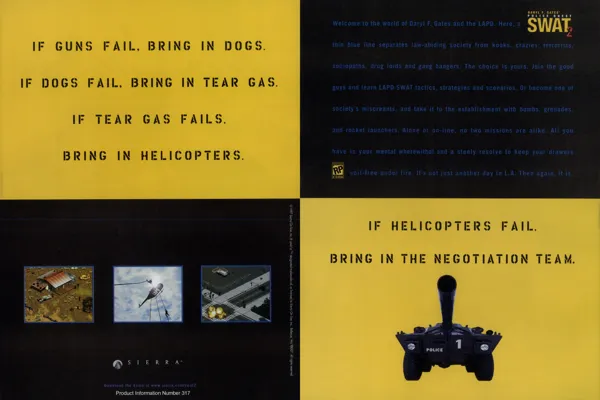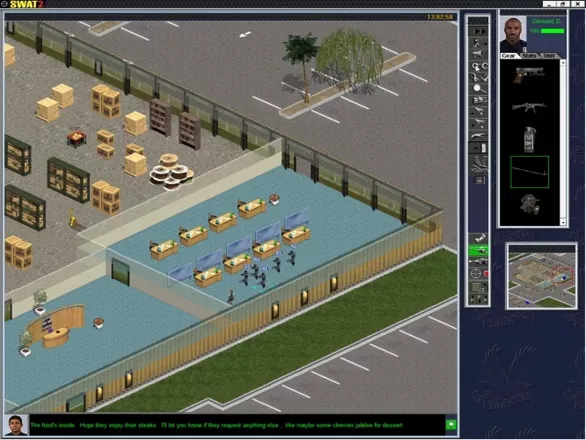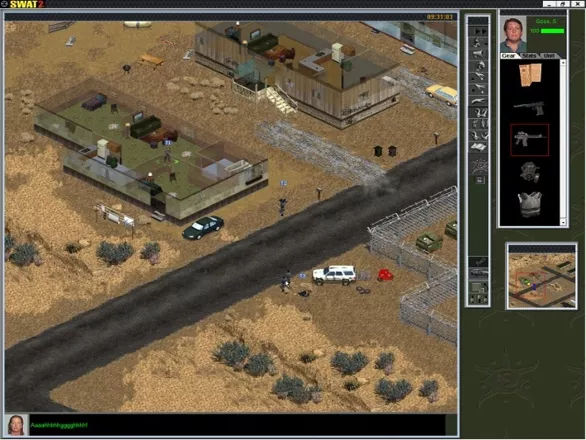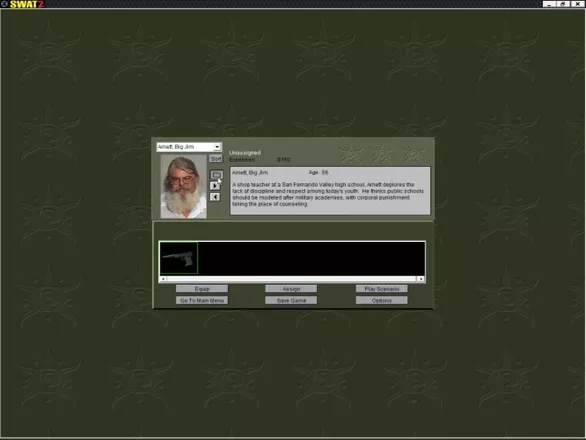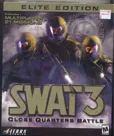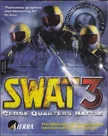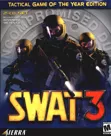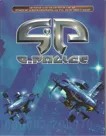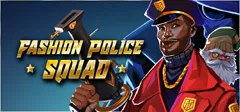Police Quest: SWAT 2
Description official descriptions
Police Quest: SWAT 2 is a real-time tactical game in which you control the actions of a SWAT team on crisis situations. The game is played from a 3/4 isometric view as you control the team members' movements and actions. Play as either the police or the terrorists to achieve your goals.
Spellings
- 超级特警:霹雳小组2 - Simplified Chinese spelling
Groups +
Screenshots
Promos
Videos
Add Trailer or Gameplay Video +1 point
See any errors or missing info for this game?
You can submit a correction, contribute trivia, add to a game group, add a related site or alternate title.
Credits (Windows version)
545 People (510 developers, 35 thanks) · View all
| Design | |
| Lead Programming | |
| Programming | |
| Graphics / Artwork | |
| Art Director | |
| QA Lead | |
| QA Manager | |
| QA Assistant Manager | |
| [ full credits ] | |
Reviews
Critics
Average score: 68% (based on 24 ratings)
Players
Average score: 3.3 out of 5 (based on 25 ratings with 2 reviews)
Too far ahead of its time to be fun, even with the simplified procedures
The Good
Lots of authentic SWAT gear, negotiation side seldom seen in any media, much less games (but you have no control over that), ability to call in the big toys (helicopter and the "tank"), strict rules of engagement, decent debriefing
The Bad
Zone of View rules are unclear, dropping throw phones procedure was never explained in "training level", lack of tutorial (they give you 2 training missions, and that's it), scenario ends automatically without any time for you to gather evidence, no debriefing timeline explaining what happened at each step.
The Bottom Line
SWAT 2 is an attempt to create a game based on proper SWAT procedures, from hostage rescue to proper challenge of suspects, from defusing bombs to Stockholm syndrome, this game's got it all. It will even let you play the other side, as the terrorists who will go against LAPD SWAT teams. There's some mumbo-jumbo about the leader Basho, and some blah-blah about Fifth Order... Heh.
The game has two major sections... In the pre-scenario setup, you create and outfit your two types of SWAT elements: assault (usually of 1 leader, 1 scout, 1 rear guard, and 2 assaulters), and sniper (1 observer and 1 shooter). A variety of gear can be given, from pistols and MP5 submachineguns, to rappel gear and gas masks, from tear gas launchers to flashbangs, from EMT kits to Battering Ram, we got it all. (The terrorists gets fewer but nastier toys to play with) Once you got them setup the way you want, it's time to go to the scenario/mission.
The mission gives you a short video overview of the situation, then you start with initial deployment. LAPD units have blocked off the area, and SWAT bus has just arrived. It is up to you to cover all the exits and determine when to move in with assault elements should negotiations fail.
You get a 3/4 isometric view of the surrounding area, with a minimap in the lower-right coner. The right-side is a status window of the element and member of the unit you have selected. You can tell them to equip certain items with that window as well. You can swap the mini-map and the regular map if you wish to get a bigger view.
If the green telephone icon is flashing, Lt. Alvarez of CNT (negotiator) is trying to update the situation for you. He will keep you appraised of the situation, and ask you for decisions occasionally. You can authorize a throw-phone (i.e. shock-proof cellphone you'd toss to the suspects in hopes of establishing communication) if the situation warrants it. On the other hand, sometimes the situation just escalates with no hope of negotiation, esp. when you're dealing with a deranged person. In that case, it's time to assault. However, negotiations will take as long as it needs to resolve the situation... Unless shots are fired inside, in which case, immediate assault must take place to rescue the hostages. Otherwise, suspect's demands will often be met, like money, food, getaway car, etc. Remember, they all come out of SWAT budget!
The team can all be equipped with gas masks, and you should immediately equip that, unless you're fighting indoors in VERY confined spaces (where the tear gas can be lethal). Then it's a matter of breaching the door (with the ram if it's locked, or the door breach charge if you need a BIGGER door taken down). Then you have to decide on the strategy... Tear gas inside first, or flashbang and then rush in? The hope is to arrest the suspect(s) and free the hostages with absolutely no casualties. However, should you have to choose, save hostages first, police second, suspects third. Leave shooting as a last resort, though. Use flashbangs and tear gas to coax suspects into surrendering (or just rush in an arrest them while they are incapacitated). And if you spot any evidence, remember to snap them up. Items such as handguns, drugs, and other items may be found and will help secure convictions
The problem is you only have two "training levels" to practice your skills on, and that's simply not enough to do all the skills like throw phone and such unless you want to play training a couple dozen times. And who'd want to do that?
Another problem is the clumsy interface. You can't move while having the gun armed, as you only got a "shoot" cursor when that happens. There's a hotkey to bring up the long gun, but not to put it away. To activate the ram, I have to remember who had it, click on him, go through the inventory, click on the ram to activate that, then activate "door entry mode", and click on the door to breach, Then I need to coordinate the flashbang tosser, and the rest of the team to go in after the bang. At least one other will need to have flashbang or tear gas ready to hit suspects upon entry...
Fortunately, the time scale can be slowed way down to 1/5th or less real-time. to make the game less hectic, but the flip side is often nothing will happen for sveral minutes. And when it happens, it happens fast, so you'll have to slow down time again.
When all the suspects are neutralized or arrested, and all the hostages are freed, that's tne end of the mission, unless you need to defuse some bombs and boobytraps and such. So if you want to grab all the evidence in the compound, you better do it before you "rescue" the final hostage or take out that final suspect. Else the mission will end automatically, and you'll miss the extra stuff.
The game's graphics are decent, considering the technology available back then. The music, however gets a bit grating after al while.
The AI is perhaps too smart, as it seems to be the first game to use sort-of fuzzy logic to make decisions for all the non-player characters, and it's difficult to predict what the AI may do next.
ALL in all, SWAT2 manage to wound itself with its sheer weight of SWAT authenticity. It is neither a game nor a simulation, but some sort of weird hybrid. While it rewards players for good job, it doesn't give players enough tools to figure out what had went wrong and what can be done to rectify that problem. The performance is also not that good. Perhaps it's a bit too ahead of its time. Fortunately, SWAT3 took out all the boring parts and went to full 3D, thus reviving the series, but that's for another review.
Windows · by Kasey Chang (4579) · 2005
More of a game than an actual police simulation, which is not necesarilly a bad thing.
The Good
This can be a very entertaining and addicitive game if you understand the controls. This episode of the SWAT series seems to focus more on being a game, rather than being a realistic police simulation.
Amongst the interesting things is that there is a huge difference between the two groups (SWAT and the Five Eyes). If you play as a SWAT officer, you'll have more than enough money for your organisation, but you'll need the public's support if you want to continue. Furthermore, in the missions themselves, you'll have to be very careful. Only take down threatening suspects, and make sure to take care of the innocent people involved. Position your men well, and make sure that no one escapes. And of course, the sniper placement is very important as well... should you give him the order to fire, or better wait? Also, you'll be giving instructions to the CNT which can heavily influence the outcome of a mission... will you grant an escape vehicle to a suspect so that he doesn't kill a hostage?
However, if you decide to join the ranks of the Five Eyes, you'll be playing a total different game. Although you have a lot of volunteers for your mission, you probably will be managing your money well. And instead of coordinated plans that'll succeed, you'll need to be a master of hit-and-runs, else your organisation may be arrested. Send your terrorists in to do the job, and make sure that you have an escape route ready after you've completed your mission. Hostage missions can be very tense, but you'll be in control of them, thus you have something that'll protect you against SWAT. Don't go too roughly on them, else you might be in trouble.
Amongst the things that keep me returning to this game is the different ways on how a mission can play out. This is one of the few games in which there are several random factors that'll change a mission. The suspects can be placed on different locations, there may be less hostages being held. Most of the NPCs tend to act different as well. Sometimes, the suspect will either start firing when he sees your element, or immediatley surrender. In one mission, I had a suspect retreating with a hostage in tow, and closing the door. Whilst I was planning a strategy to recover the hostage, I suddenly heard a yell. Fearing for the hostage's live, I immediatley send in my element, and to my genuine surprise, the suspect was actually knocked down. The hostage had defended himself.
The story itself also kept me returning to this game, and made me complete the game. The SWAT campaign may look like a bunch of random missions, but as you collect evidence, you'll uncover an interesting conspiracy. If you've collected all the evidence, everything will be wrapped up in the epilogue. That there actually were several random missions in the campaign didn't bother me in the least. After all, even if there's a conspiracy going on, that doesn't mean that other petty criminals are busy themselves. The terrorist campaign also has an interesting story, although it didn't grip me as much as the SWAT campaign. Still, the final missions for the terrorist are pretty fun(which is very good, when you compare it with the nearly-impossible final mission for the SWAT campaign), and the ending is quite good.
Finally, this SWAT episode sees the return of Sonny Bonds, the hero in the first three Police games. Even 'tho he doesn't play a focal point in the storyline, and is just another one of the police officers, adding him brought a smile to my face, and it was great to work with him again, for one last time.
The Bad
Even 'tho there are many good points, there are several things that brought the game down, and probably things that didn't make it a classic.
First of all, there doesn't seem to be any management with the ammo. Each gun has an endless supplies, and although you can run out of flashbangs, you can't run out of gas grenades.
Second, the controls can be AWFUL if you haven't mastered it. It'll take you several hours of gameplay before you can be totally comfortable with the interface.
Also, your officers(or terrorists) can sometimes act pretty stupid. Although terrorists would automatically open a door, SWAT would not, so if an officer was trailing a suspect, who closed the door behind him, the officer simply refuses to open the door without ordering him to slice the pie. If you're in the middle of a hectic combat situation, this can be painful. Also, if your officers are fired upon, but you have them selected, they won't make a single move. Sierra explained that this was because the player wouldn't feel as if they're in control of their officers. This is just plain silly. An option to turn this off would've been nice. It's quite interesting to see unselected officers react when they're fired upon, as they immediatley run towards the nearest cover that they can find, and start firing back.
Third, getting evidence for the SWAT campaign can be a pain sometimes. When all the suspects have been defeated, and all the innocent people saved, the mission ends within several seconds. If you haven't gotten all the evidence in that mission, then you won't be able to complete the game. An option to end the mission when the player desires to would've been great.
The Bottom Line
So, would I recommend this game? Yes, I would. Although there are several mistakes that made it lose its appeal to many gamers, these can be outweighed once you get used to the interface. The campaigns for both sides are great, and different ways to play make this one of the entertaining SWAT games. However, if you're looking for a realistic simulation, I'd recommend the other two SWAT games.
Windows · by Ruben van der Leun (13) · 2002
Discussion
| Subject | By | Date |
|---|---|---|
| Win 3.x | eXo (346) | Jul 25, 2014 |
Trivia
Cameos
Sonny Bonds, the protagonist of the original Police Quest series, appears in this game as one of the selectable officers you can assign to your SWAT squad.
As in Police Quest: Open Season, game designer Daryl Gates, the former chief of police of the Los Angeles Police Department, will show up from time to time to give you some helpful in-game hints.
Coincidence?
One of the key characters in the game is Mayor Preston, the corrupt, arrogant and pompous mayor of Los Angeles, where the game takes place. The designer of the game, Chief Daryl F. Gates, was forced to leave his post of LAPD chief after rows and clashes with Tom Bradley, the real-life mayor of Los Angeles at the time of the infamous LA riots of 1992. It is not known why, however certain posters to this site have believed that Gates' rows with Bradley inspired the Mayor Preston character, and still others believe it's just a coincidence.
Information also contributed by Alan Chan
Analytics
Identifiers +
Contribute
Are you familiar with this game? Help document and preserve this entry in video game history! If your contribution is approved, you will earn points and be credited as a contributor.
Contributors to this Entry
Game added by Andy Roark.
Additional contributors: Jaromir Krol, Alaka, CaesarZX, Plok, ryanbus84.
Game added May 31, 1999. Last modified January 13, 2025.


